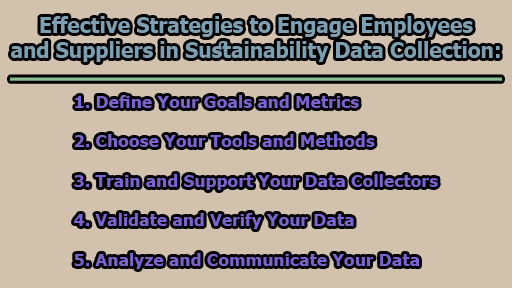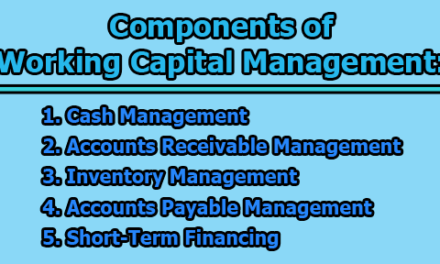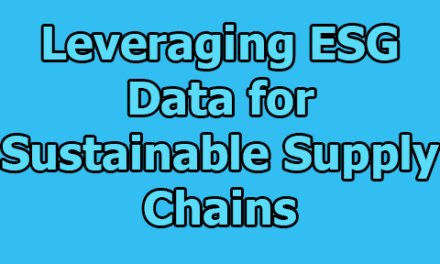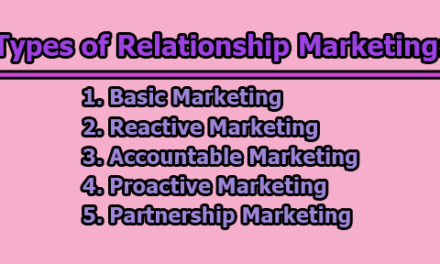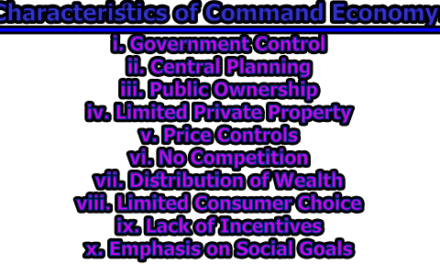Effective Strategies to Engage Employees and Suppliers in Sustainability Data Collection:
Sustainability data collection and analysis have become integral components of any business’s strategy to measure and enhance its environmental, social, and economic impact. However, gathering data from diverse sources, including employees and suppliers, can be a complex and time-consuming process. In this article, we will delve into effective strategies to engage employees and suppliers in sustainability data collection while ensuring the data’s quality and accuracy. These practices will not only streamline the process but also contribute to a more sustainable and responsible business.
1. Define Your Goals and Metrics: The first crucial step in engaging employees and suppliers in sustainability data collection is to establish clear objectives and metrics. Define what you want to achieve and how you will measure it. Begin by identifying key sustainability issues and opportunities relevant to your business. Determine the indicators and standards that will be used to monitor your performance. It is also essential to align your data collection with your sustainability strategy and reporting requirements. A well-defined framework and a common language will facilitate effective communication of expectations and objectives to all stakeholders.
2. Choose Your Tools and Methods: Selecting the appropriate tools and methods for data collection is vital. The type and quantity of data required will dictate the tools and techniques to be employed. You can use surveys, interviews, audits, sensors, or specialized software to collect data from different sources. Additionally, consider the use of spreadsheets, databases, dashboards, or analytics platforms for storing, organizing, and visualizing the data. Assess the accessibility, security, and reliability of the chosen tools and methods to ensure they meet your goals, available resources, and the needs of your stakeholders.
3. Train and Support Your Data Collectors: The competence and motivation of individuals responsible for data collection are pivotal to its success. Whether they are employees or suppliers, providing them with adequate training and support is essential. Ensure that they comprehend the purpose, process, and advantages of data collection. Offer clear guidelines, instructions, and feedback on how to collect, record, and report the data. Moreover, consider providing incentives, recognition, or rewards to encourage their participation and contribution. Empowering data collectors will result in more accurate and meaningful data.
4. Validate and Verify Your Data: Once the data has been collected, validation and verification become paramount. Ensuring that the data is complete, consistent, and credible is vital for accurate sustainability reporting. Several methods can be employed for this purpose, including cross-checking, sampling, auditing, or third-party verification. Identify and address any errors, gaps, or outliers in the data to maintain its integrity. Document and report your validation and verification methods and results to enhance transparency and the reliability of your data.
5. Analyze and Communicate Your Data: The final step in data collection is to analyze and communicate the data effectively to extract insights and drive actions. Employ suitable methods and tools for data analysis, identifying patterns, trends, and opportunities for improvement. To ensure the data reaches your employees, suppliers, and other stakeholders, communicate it in a clear, concise, and engaging manner. Visual aids, such as charts, graphs, or infographics, can be used to illustrate findings and recommendations. Encourage feedback and suggestions from your audience to continuously improve your data collection and enhance sustainability performance.
In conclusion, engaging employees and suppliers in sustainability data collection is not only a necessity but an opportunity for businesses to make more informed decisions and drive positive change. By adhering to the best practices outlined in this article, companies can streamline the data collection process, improve the quality and accuracy of their sustainability data, and foster a culture of responsibility and accountability among their stakeholders. In doing so, businesses can better measure and enhance their environmental, social, and economic impact, ultimately contributing to a more sustainable future.

Library Lecturer at Nurul Amin Degree College

